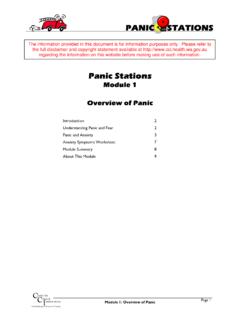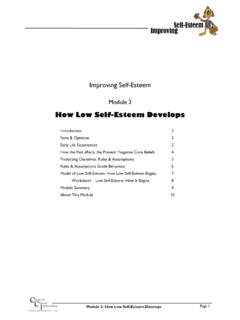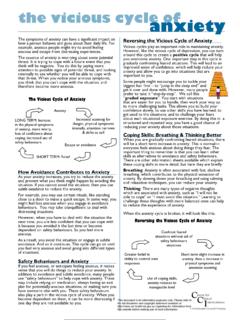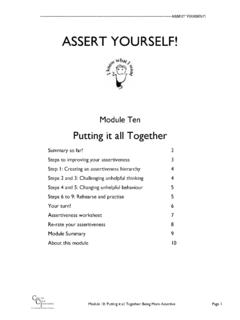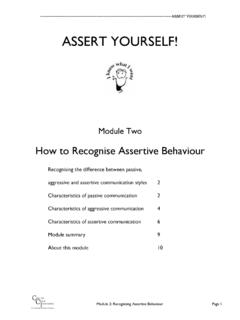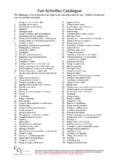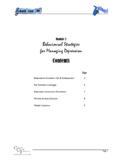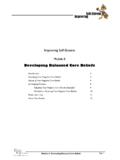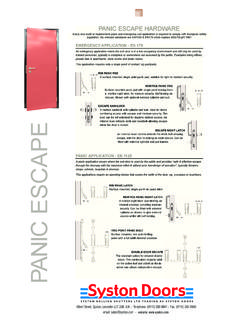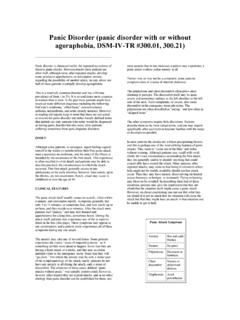Transcription of PANIC STATIONS Panic Stations - WA Health
1 PANIC STATIONS . PANIC STATIONS . The information provided in this document is for information purposes only. Please refer to the full disclaimer and copyright statement available at regarding the information on this website before making use of such information. PANIC STATIONS Module 3. The Thinking-Feeling Connection Introduction 2. How Our Thoughts Influence Our Feelings 2. What am I Feeling? 2. Automatic Thoughts 3. Feelings Are Not Thoughts 3. Making the Thinking-Feeling Connection 4. Module Summary 6. About this Module 7.
2 Completing Activities On Screen: To make the modules more interactive, you can type your responses on screen whenever you see instructions typed in blue. If you have Adobe Reader you CANNOT SAVE YOUR. RESPONSES. To keep a copy, please print the pages as a record. If you have the full Adobe Acrobat, you can save your responses. If you don't want to do the activities on screen, you can print out the module and work through it by hand. C entre for CI linical nterventions Module 3: The Thinking Feeling Connection Page 1.
3 Psychotherapy Research Training PANIC STATIONS . Introduction People often believe that the feelings and emotions they experience are determined by external events, situations, and the behaviour of others. For example, we may hear ourselves say, My boss made me so nervous, My partner made me so angry, This trip down south made me feel so relaxed, or I'm depressed because I didn't get the job I wanted. What is the assumption underlying these statements? That someone or something other than ourselves was directly determining the feelings we experienced.
4 We come to these conclusions automatically without asking ourselves if this assumption is true. However, if we stop to analyse the process that links an external situation to our emotional responses, we will find that there is a step in between. The aim of this InfoPax module is to describe how thoughts can influence emotions. Learning how thoughts can influence the way we feel is the first step in understanding how we can change that process to improve our mood. How Our Thoughts Influence Our Feelings What really makes us feel and respond the way we do, is often not the situation or the words and actions of another person, but how we perceive that situation or that person's actions.
5 It is how we see something or someone and what we think about it or them that really influences how we feel. It is our thoughts and beliefs about an event that significantly influences our emotions and actions. Here's an example. You've had a long and tiring day at work and arrive home to find two sets of muddy footprints (your son's and his dog's) on your cream-coloured carpet. If you thought, I can't believe that I. have to come home to this. That inconsiderate, selfish brat! - how would you feel? What if you thought, I've told him not to bring the dog in but he never listens.
6 I try so hard, but I just can't get them to do what I ask. I must be a really bad mother.. You probably realised that you felt different emotions as a result of those different thoughts. Often, we are not aware of our thoughts and beliefs because they are so automatic and happen quickly. But they are there, and they affect the way we feel. WHAT AM I FEELING? It is often difficult to know exactly what we are feeling and even more difficult to put it into words. The following list contains words that describe feelings, and this may be a useful starting point in you being able to understand the connection between your thinking and your feelings.
7 WORDS THAT DESCRIBE FEELINGS. Tense Scared Angry Joyful Cheerful Uneasy Anxious Depressed Enraged Excited Euphoric Disgusted Frightened Sad Irritated Exhilarated Keyed Up Jealous Panicky Unhappy Annoyed Calm Tired Frustrated Nervous Discouraged Mad Happy Flat Insulted Obviously this is only a limited list but it gives you an idea of the kinds of words we use to describe our feelings. C entre for CI linical nterventions Module 3: The Thinking Feeling Connection Page 2. Psychotherapy Research Training PANIC STATIONS .
8 AUTOMATIC THOUGHTS. Just as we are not always conscious of the way we walk or how we drive a car, we are often not aware of our thinking. Some of our thinking is so habitual that it is automatic, and just like driving, when things are automatic, we might not be conscious of them. All of the time, our brains are turning over thoughts and ideas. However, we are not consciously aware of most of them because it happens relatively fast and we are not accustomed to slowing them down. Our automatic thoughts, however, play an important role in our emotional well-being.
9 There are three kinds of automatic thoughts: Neutral thoughts "I think I will buy some bread today". Positive thoughts "This is something I can do really well". Negative thoughts "I must look like a fool, I bet everyone thinks I am acting stupid". People who have difficulties with PANIC attacks often have particular types of thinking patterns a) Have catastrophic thoughts about normal or anxious physical sensations (eg I'm a bit dizzy I'm going to faint! ). b) Over-estimating the chance that they will have a PANIC attack (eg I'll definitely have a PANIC attack if I catch the bus to work ).
10 C) Over-estimating the cost of having a PANIC attack (eg No! This can't happen now. It will ruin everything!" ). Automatic unhelpful thoughts often reflect worries and concerns, however they can be about anything at all, anything we have ever seen, heard or learned. Additionally, it can be anything we know about from any source at all positive, neutral, or otherwise. Obviously, though, negative automatic thoughts are the ones that can cause us emotional distress and it is these thoughts that can be changed to reduce your anxiety about PANIC attacks.
